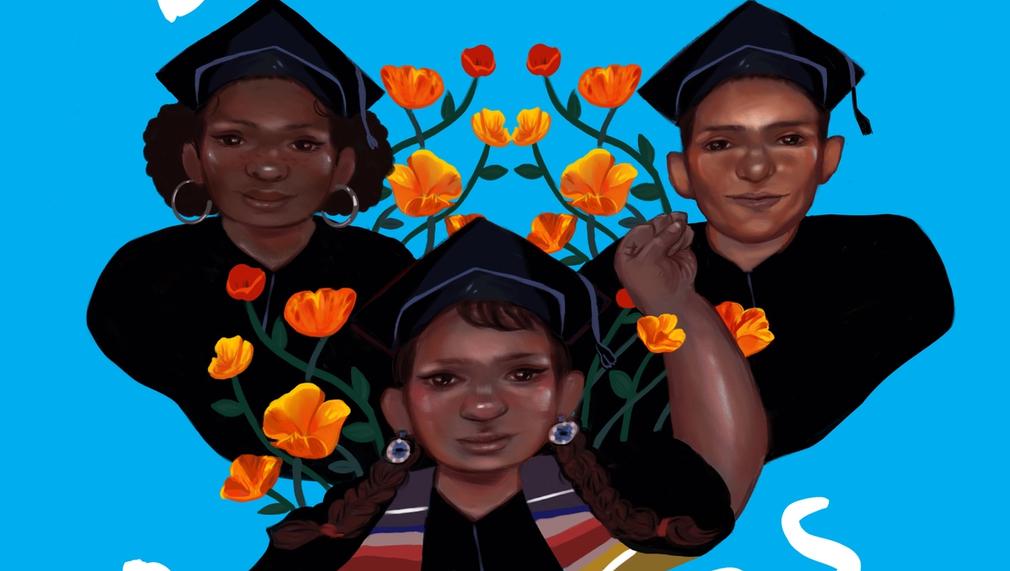LA's College Comeback: Tackling Income Inequality
A person who graduates from college earns, over the course of their lifetime, $1 million more than a high school graduate. Unfortunately, during the pandemic, up to 40% of Black and Latinx students in LA community colleges were forced to pause their college plans due to economic factors beyond their control. Our program will help 400 students come back to college and ensure success in closing the economic inequality gap; in other words, a $75,000 grant from LA2050 could result in a $400 million return on investment.

What is the primary issue area that your application will impact?
Income Inequality
In which areas of Los Angeles will you be directly working?
County of Los Angeles
In what stage of innovation is this project, program, or initiative?
Pilot or new project, program, or initiative
What is your understanding of the issue that you are seeking to address?
Jerome was set to attend his dream school, Cal State LA, in fall 2020; he'd selected his courses, paid his fees and attended the virtual orientation. But, economic hardship struck his family. Both of his parents had lost their jobs, which forced him to pause his college plans and start working more hours at the local supermarket to help pay rent and buy food. Jerome's story is not uncommon. It is the story of thousands of Angelenos who had to step away from their college and career dreams during the pandemic. Some of the steepest declines in enrollment were at the nine campuses in the Los Angeles Community College District which lost 28% of its total enrollment, with 32% decline for Latinx students and 40% decline for Black students. While a small number have returned to campus in recent years, the vast majority have not. Research shows that once students step away from their college plans, it becomes increasingly difficult for them to come back. It is imperative that we act now.
Describe the project, program, or initiative this grant will support to address the issue.
LA's College Comeback has three essential components: The first is an outreach campaign to tens of thousands of youth through social media. For those who had to leave behind their plans for higher education during the pandemic, this program will send the message that "College is possible," and that support is available. The second element is unique: There will be a team of Comeback Navigators who will work directly with these former students who want to return to college. These Navigators all have a similar lived experience to the people with whom they are working. They too were once forced to leave school due to economic challenges. Fortunately, with support, they were able to return and complete their college degrees. Now they plan to pay it forward; they help students complete all the paperwork to return to college, assist them through any difficulties, and connect them with essential resources on campus to ensure they will succeed. The third element recognizes that it takes a village to make this initiative to succeed. The program enlists the help of K-12 and higher ed institutions to work to re-enroll as many students as possible. What makes us confident that this is the best way to address the problem? While LA's College Comeback is a pilot for our organization, it's based on a successful program in Riverside County that re-enrolled 200 students back into college. We have confidence that we can adapt and build on that model with a much bigger population in LA.
Describe how Los Angeles County will be different if your work is successful.
LA 2050 support will enable us to reach at least 40,000 Angelenos through our outreach campaign. Of these, we plan to work with 400 students in the first year - young people who had to postpone their college aspirations due to financial hardship during the pandemic. By October 2024, we expect that each of these students will have either re-enrolled or developed a plan for re-enrollment in college. The long term vision of success is for these 400 young students to come back to college, to receive the support they need, and to graduate. If this pilot is successful, we can replicate the model for thousands, more students over the next decade. The intended impact is to help thousands of young people and their families to attain upward economic mobility. Higher education levels are linked to better earnings, steadier employment and more opportunities to climb the socioeconomic ladder. Indeed, completing higher education is the most proven disruptor of intergenerational poverty.
What evidence do you have that this project, program, or initiative is or will be successful, and how will you define and measure success?
There is one crucial way to measure our impact: whether we succeed in helping 400 students, namely Black and Latinx, come back to college and graduate. What is the evidence that this program will be successful? First, this is an initiative of SoCal CAN, a collaborative of 150 local college access and success organizations. We work with 250,000 low-income, first-generation students annually, helping them to get into college and to succeed in getting degrees. Nationally only 11 percent of low-income, first-generation students graduate from college; in our network, we have achieved a success rate of 89 percent. Another indicator of success is a similar initiative we developed: Project SOAR. Because of its success in helping public housing students get into college, SOAR has been acclaimed as a national model. Its special sauce is having staff with lived experience who support students' college aspirations; this is similar to the Education Navigator role in LA's College Comeback.
Approximately how many people will be impacted by this project, program, or initiative?
Direct Impact: 400
Indirect Impact: 40,000